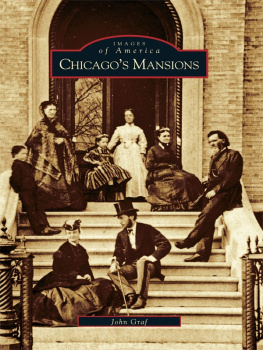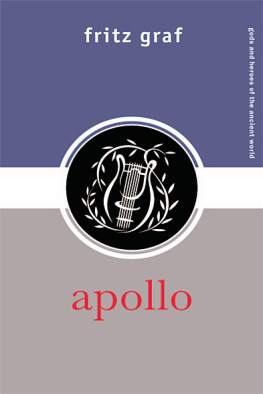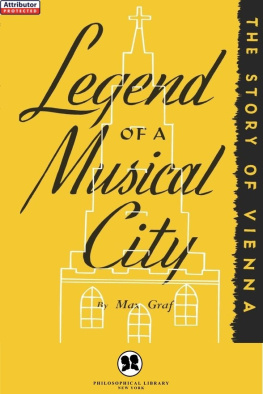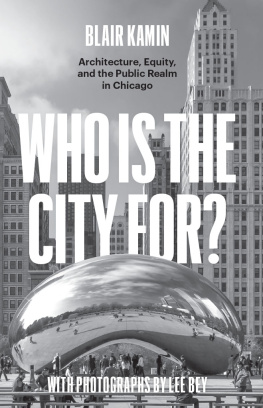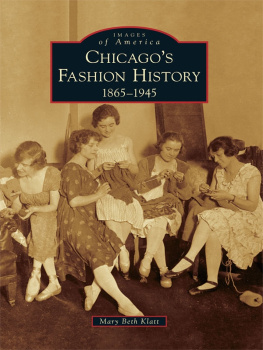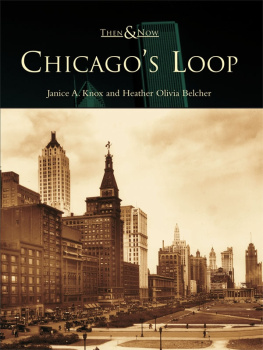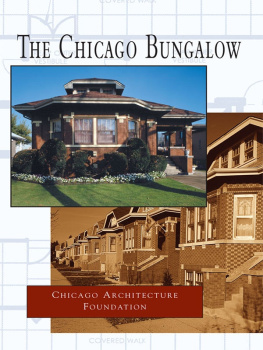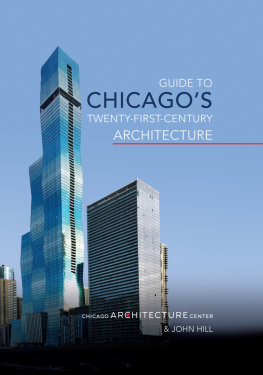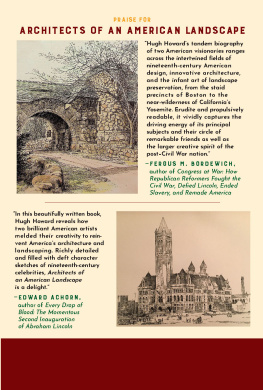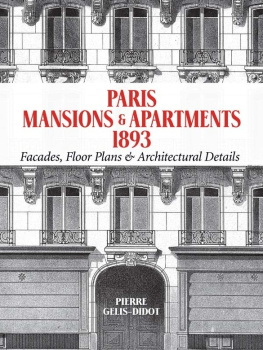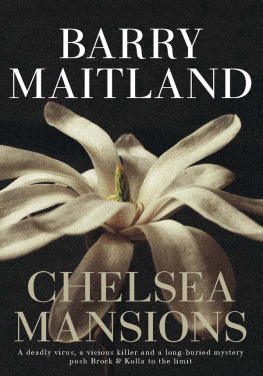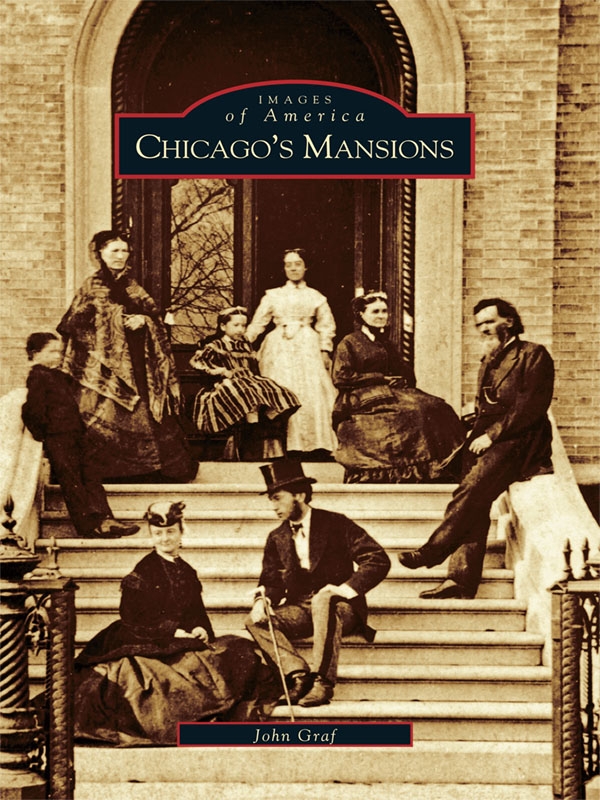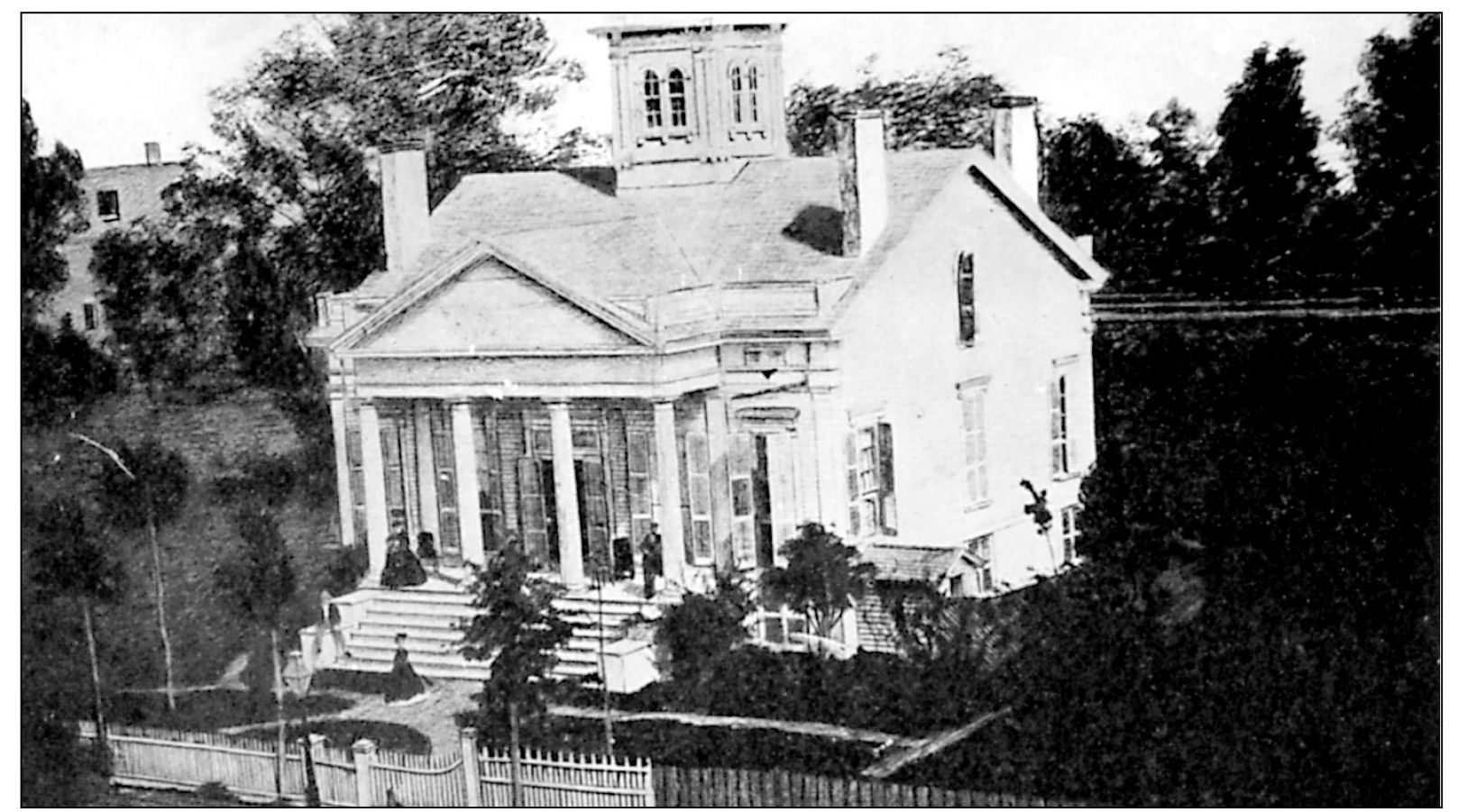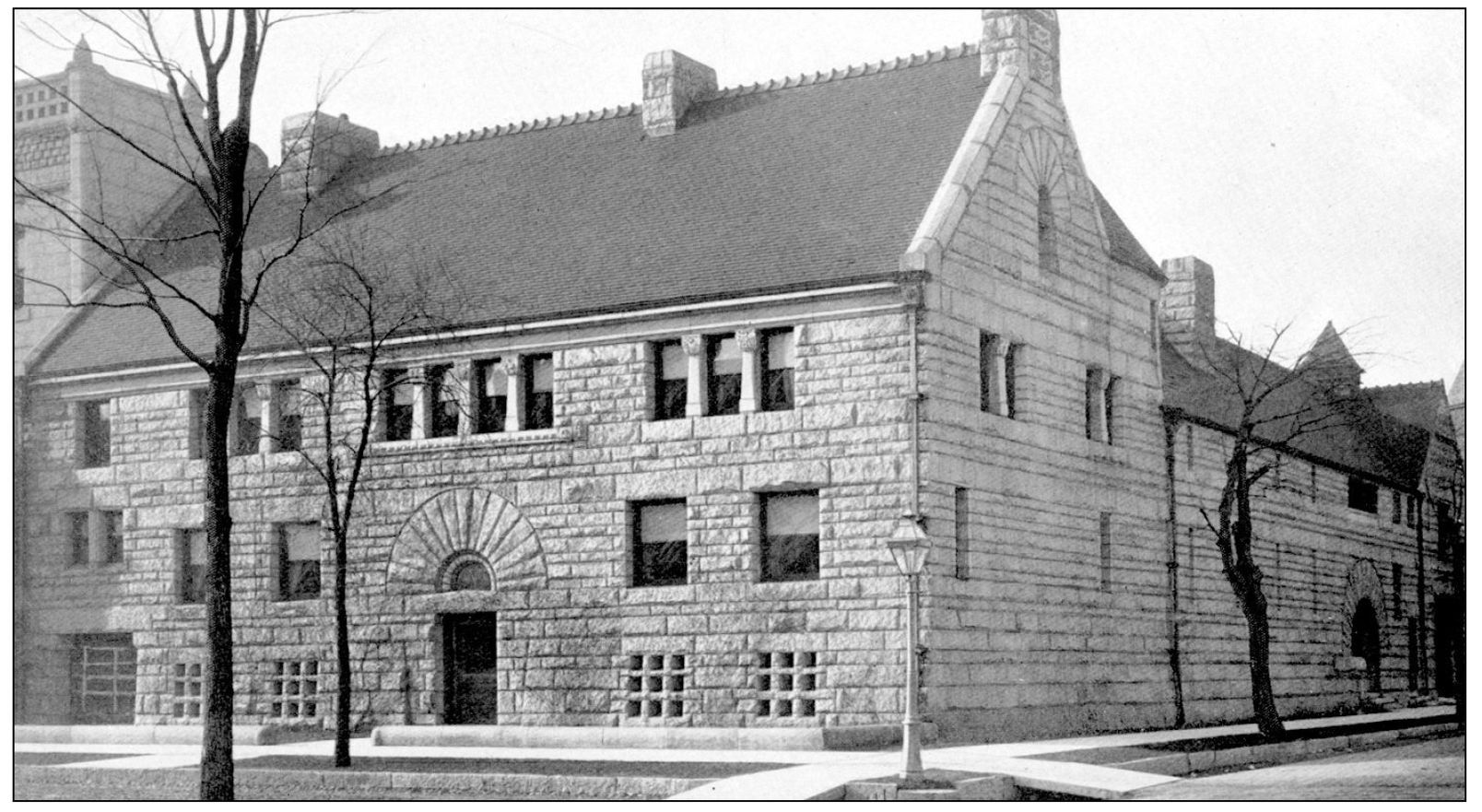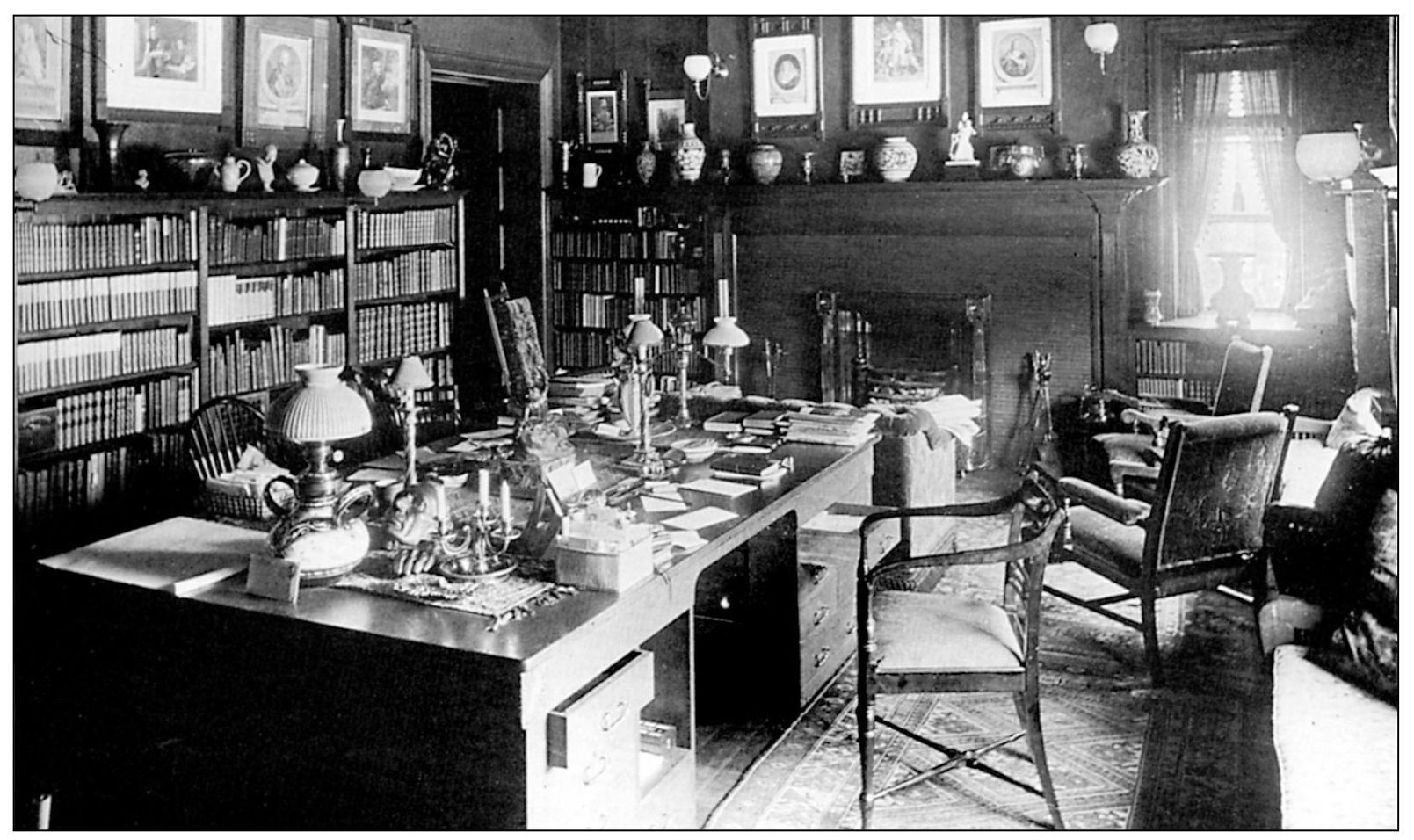This book would not have been possible without the great efforts of so many people. First, I would like to thank the good people of Chicago who graciously invited me into their mansions and generously provided me with historical information and photographs of their homes. My grandfather came from Germany to Chicago in 1923. My father was born in Chicago and I was born in Chicago. As a native son I have a very special love for this city and its people. And I find so many others like myself who are equally as passionate about Chicago. It seems everyone in Chicago is a goodwill ambassador who loves to boast about our city and especially its architecture. On countless occasions compete strangers provided me with valuable information that could not be found in any library or on any search engine.
There were also many friends and organizations that provided invaluable support. In no particular order I would like to thank Bob Remer from the Edgewater Historical Society for writing the foreword for this book; Kenan Heise, the dean emeritus of Chicago history, for his suggestions; Lester Coyle & Janet Whitton for their constructive input and for taking the time to review early drafts of this project; Piero Orsi at Re/Max Showcase for helping me to promote all of my books; my friend since childhood Joe Cornell at Spin-Off Advisors for his support; model Rebekah R. Webb for all of her assistance; John & Pat Hartigan for their support; Paul, Denise, and Michael Ryske for their continued friendship; Matt, Lori, Lily, & Mary Jo Kelly for their support; Tony Narducy & Sandy Street for the information on Groveland Park; Julie & Dave Kalainov whose home I hope to include in a future book featuring North Shore mansions; my friend Don Watkins for scanning all of the photographs that appear in the book; Jim Cooney at Professional National Title Network, a true Chicagoan and a fellow Cubs fan; the Office of Chicago Mayor Richard M. Daley; the staffs of the Chicago Historical Society, Commission on Chicago Landmarks, Landmarks Preservation Council of Illinois, and the Art Institutes Ryerson and Burnham Libraries.
I would also like to thank John Pearson and the rest of the staff at Arcadia Publishing for another job well done. Also a very special thanks to my friend and photographer Steve Skoropad. There are not too many people in their right mind who are willing to accompany me at 6 oclock in the morning on a cold day in January with below zero temperatures to the roughest parts of the city to shoot pictures of mansions. A debt of gratitude to Jim & Rosie Blaszczyk for their continued support. Appreciation to my late father Werner for creating my interest in Chicago and its architecture at such an early age and thanks to my mother Mercedes for reviewing countless drafts of this book for me. And last but not least, I am grateful to my lovely wife Marina for her patience and understanding and to my daughter Sabrina who puts the color in my world.
One
MANSIONS OF THE SOUTH SIDE
S ome of the finest mansions in Chicago are located on the citys South Side. The landmark Clark and Glessner mansions (which are both open to the public) can be found on Prairie Avenue. Visitors can also find the beautifully restored Wheeler-Kohn mansion there, which has been converted into an elegant bed and breakfast. A little further south lies the Calumet/Giles Prairie Landmark District that contains numerous mansions including early designs by Louis Sullivan and Frank Lloyd Wright. And only a short distance away visitors can admire the mansions of Groveland Park at 33rd Street and Cottage Grove Avenue.
During the late 1800s and early 1900s, Michigan Avenue was lined with fashionable residences, and better known as Millionaires Row. Although most of these mansions are gone today, the Kent mansion at 2944 S. Michigan, which was designed by Burnham & Root, still stands. Further south on Michigan Avenue, the Hoxie and Swift mansions also remain. Several stately residences continue to line Grand Boulevard (now King Drive) ; and these include such mansions as those of D. Henry Hammer, Ida B. Wells, and Robert S. Abbott. As further testament to the great architects of their day, the enormous mansions of William E. Hale, Martin Ryerson, and John McGill continue to dominate Drexel Boulevard.
The South Side neighborhoods of Kenwood and Hyde Park have been fairly well preserved. The mansions of many of early Chicagos captains of industry can be found here, many of which are designed by well-known architects like Howard Van Doren Shaw, George Washington Maher, Henry Ives Cobb, and Solon Spencer Beman. While it has been estimated that there are fewer than 100 pre-Chicago Fire homes left in Chicago, several of them are located here. South of Hyde Park there are several mansions that continue to stand in the Jackson Park Highlands Landmark District; on the far South Side in the Beverly community, visitors can find numerous mansions of architectural and historical significance.
The Clarke House (located at 1855 S. Indiana Avenue and built in 1836) is the second oldest existing mansion in the city. It was built for Henry Brown Clarke (1802-1849) and Caroline Clarke (1806-1860). This stately white Greek Revival mansion, originally stood at 1700 S. Michigan Avenue on a 20-acre estate.
The Glessner House at 1800 S. Prairie Avenue is one of Chicagos most famous mansions, and it is an excellent example of Richardson Romanesque architecture. The home was built for John Jacob Glessner (1843-1936) a wealthy farm implement manufacturer. The architect of the home was Henry Hobson Richardson (1838-1886) who completed the design shortly before his death in 1886. The home, which was designated a Chicago landmark, is the only remaining example of Richardsons work in Chicago. The house is now a museum and open for tours.
This is an interior view of the Glessner mansion featuring the first floor library. The library contains wooden beamed ceilings, a wood burning fireplace, Persian rugs, walls adorned with various paintings, and a large collection of rare books. On the large partner style desk, which was shared by Mr. and Mrs. Glessner, there is a death mask that was made of President Lincolns face shortly after he was assassinated. Today the library looks almost exactly as it did when this photograph was taken in 1888.
William Wallace Kimball (1828-1904) was the worlds largest manufacturer of pianos and organs; and this mansion at 1801 S. Prairie Avenue is a testament to his success. Completed in 1892 this home, which was designed for Kimball by architect Solon Spencer Beman (1853-1914), is one of the finest examples of Chateauesque-style architecture in the country. The three-story, twenty-nine room mansion features numerous pavilions, turrets, spires, gables, and chimneys.

